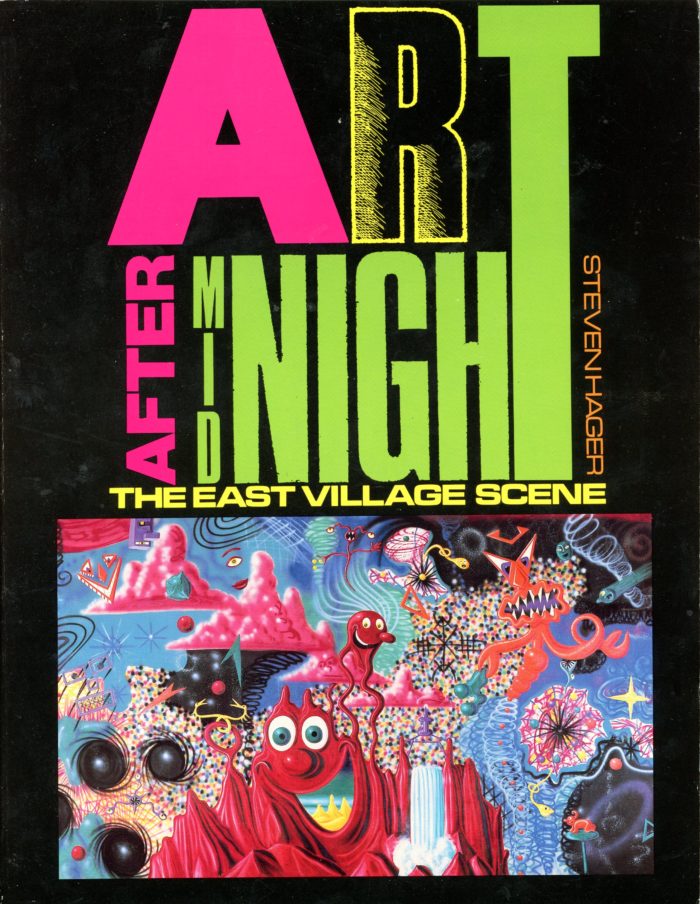
The emergence in the 1980s of new categories of art that appealed directly to general audiences resulted not only from the creativity of a new generation of artists but also from the rise of young art writers who aspired to a broad readership beyond that of the traditional art magazines. One of those writers was Steven Hager, a journalist who after being fired by The Daily News for writing positively about graffiti, became the features editor of the East Village Eye, and then in quick succession authored two highly readable books about street and club art.
Hip Hop: The Illustrated History of Break Dancing, Rap Music, and Graffiti (1984) was the first book by a major publisher to record the early history of the different facets of Hip-Hop culture. Art After Midnight: The East Village Scene (1986) covers the intersection of nightlife and art that gave rise to Jean-Michel Basquiat, Keith Haring, Kenny Scharf and the East Village art scene. Both books are based on exacting research and interviews with the key artists.
Unfortunately, St. Martin’s Press did not manage these groundbreaking books well. Hip-Hop was classified as a dance book and reached only a fraction of its potential audience. Art After Midnight was inexplicably removed by the publisher, who then shredded the bulk of its run. Hager continued bringing art to a broad public by writing the first script for the film Beat Street, and then, as the editor of High Times, featuring music and art alongside the magazine’s main focus on cannabis.
Gallery 98 has recently obtained copies of Hip-Hop and Art After Midnight. Each is rubber stamped “archive of Steven Hager” and signed by the author.



Steven Hager, Hip Hop: The Illustrated History of Break Dancing, Rap Music, and Graffiti, SIGNED 112 page book, St. Martin’s Press, 1984
Size: 9.9 x 8.2 x 0.6 inches
Sold
Hip-Hop follows the rise of rap music from the gang-dominated housing projects of the Bronx, the first parties, and the early success of Sugarhill Records. The story of graffiti moves from the streets and subways to art gallery exhibitions. The section on break dancing includes the Rockwell Association and the Rock Steady Crew. Among those interviewed are Afrika Bambaataa, Kool Herc, Grandmaster Flash, Taki 183, Phase 2, Futura 2000, Lee Quinones, Fred Brathwaite, Crazy Legs and many others.




Steven Hager, “Art after Midnight: The East Village Scene,” SIGNED 134-Page Book, 1986
Size: 8.5 x 11 inches
Sold
The richly illustrated Art After Midnight tells the story of CBGB, The Mudd Club, Club 57, Glenn O’Brien’s TV Party, the exhibition New York New Wave and the Fun Gallery. Among those featured are John Holmstrom (of Punk Magazine), Klaus Nomi, Talking Heads, Jean-Michel Basquiat, Keith Haring, Kenny Scharf, Tscheng Kwong Chi, Ann Magnuson, Patti Astor, and others.











